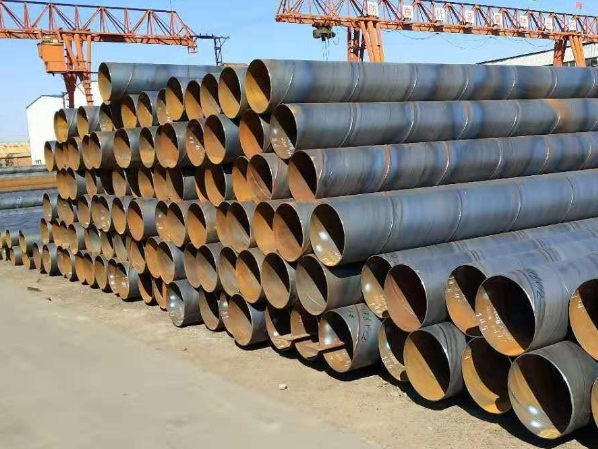
Bevel processing is performed on both ends of the spiral steel pipe and the butt connection is used. This connection method is usually suitable for transporting medium with high pressure, such as natural gas, oil, etc. Its advantages are firm connection and good sealing, but its disadvantage is that the processing technology is relatively cumbersome and requires precise bevel processing and alignment.

Commonly used welding methods include manual arc welding, submerged arc welding, argon arc welding, etc. In the welding of spiral steel pipes, commonly used welding rods include low hydrogen potassium calcium welding rods, low alloy high strength steel welding rods and stainless steel welding rods. Among them, low hydrogen potassium calcium type electrodes are suitable for welding high-strength low alloy and carbon steel pipes, low-alloy high-strength steel electrodes are suitable for welding high-strength low-alloy steel pipes, and stainless steel electrodes are suitable for welding stainless steel and acid-resistant steel pipes.
Applications of spiral welded steel pipes:
Spiral steel pipes are mainly used in water supply projects, petrochemical industry, chemical industry, electric power industry, agricultural irrigation, and urban construction. The specific uses are as follows:
1. As piling steel pipes, spiral steel pipes do not require any anti-corrosion processing and can be used directly. Generally used for bridge piling, highway support, turret billboard columns, etc.;
2. As a pipeline for fluid transportation, spiral steel pipes need anti-corrosion processing, such as: outer epoxy coal pitch paint, epoxy resin powder, 3PE anti-corrosion, etc. Generally used for transportation steel pipes in municipal water supply, drainage, sewage treatment projects, ocean water crossings, etc.;
3. Spiral steel pipe is used for gas transportation. Generally used in gas, steam, liquefied petroleum gas and other transmission pipelines.
In general, the connection method and applicable welding rods of spiral welded steel pipes should be selected according to the requirements of the specific pipeline during the production process to ensure the final pipeline quality and use effect.
Go here to learn more: Welded steel pipe production process
Related information
